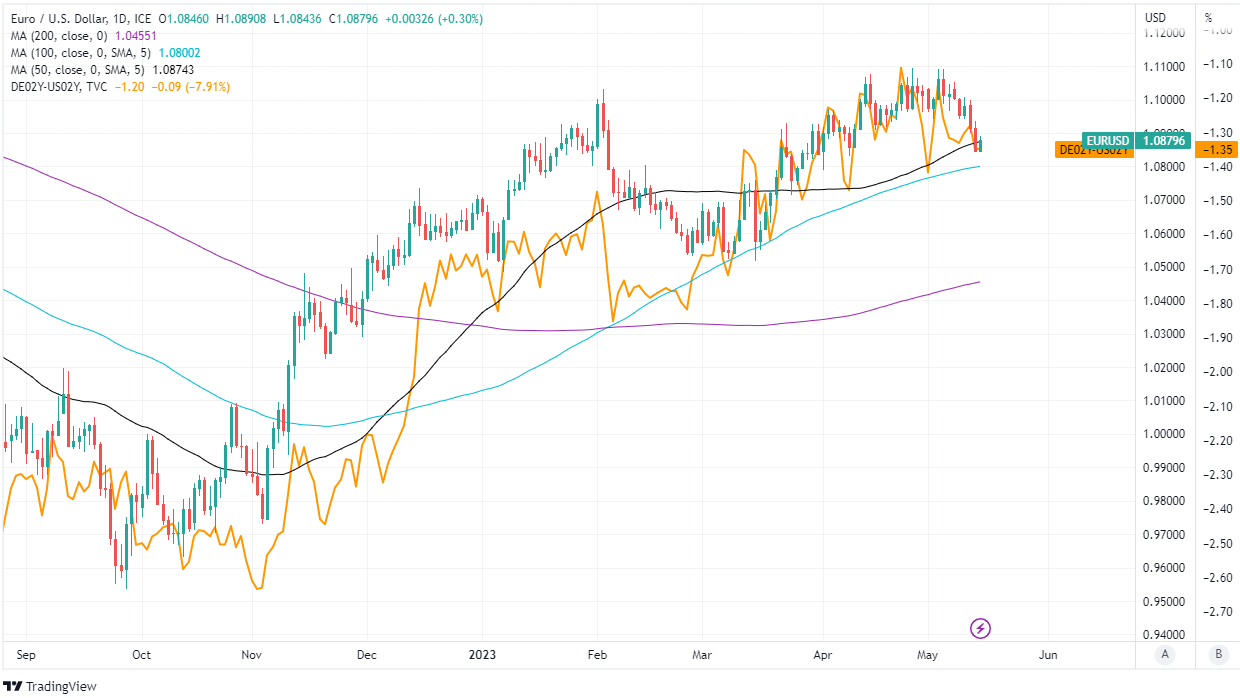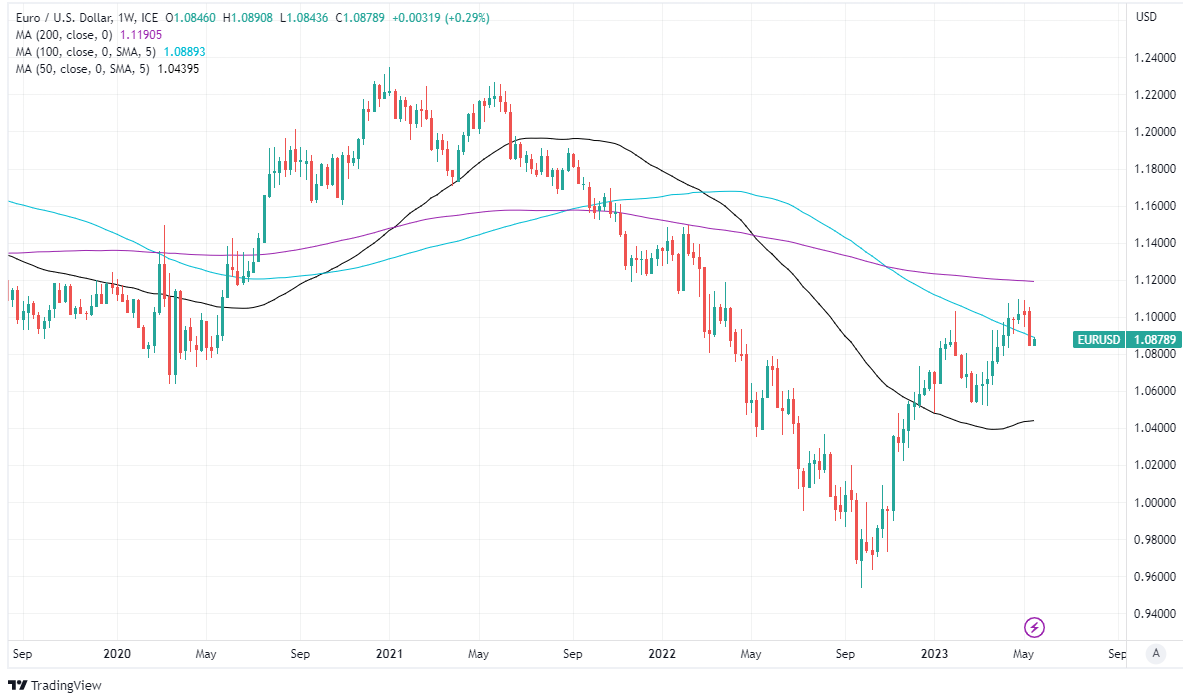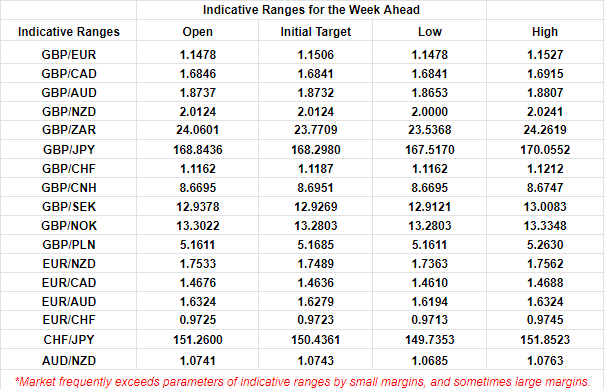EUR/USD Week Ahead Forecast: Risking Lower Close if EZ Economy Slows
- Written by: James Skinner
- EUR/USD steadier on feet but with economic data risks ahead
- Softer industrial production, retail sales may mean risk to GDP
- Scope for U.S. retail sales & debt ceiling risks to support USD

Image © European Commission Audiovisual Services
The Euro to Dollar exchange rate rose back onto its feet near one-month lows to open the new week but might risk slipping to its softest levels since late March if transatlantic economic data spoils the market's appetite for the single currency.
Europe's single currency rose from last week's lows against Dollar in a buoyant market for risky assets like stocks and commodities on Monday but remained precariously positioned on the charts ahead of Tuesday's release of first-quarter growth data in Europe and retail sales numbers in the U.S.
"The realignment of EUR/USD with bond spreads has run its course and hedge funds maintain their long position last week at 22.5% of OI, so the profit-taking looks tactical and does not suggest a more fundamental shift is afoot," says Kenneth Broux, an FX strategist at Societe Generale.
"We can’t ignore the jeopardy of a deeper pullback of course, especially if US retail sales come in strong tomorrow. The confluence of 100-DMA and the trendline going back to September 2022 near 1.0800/1.0730 is a crucial support zone. A break would hasten a retracement towards 1.05," he adds.
Monday's rebound came as the Euro appeared to overlook a Eurostat report suggesting industrial production fell more heavily than expected for March.
 Above: Euro to Dollar rate at daily intervals with selected moving averages indicating possible areas of technical support and resistance, and shown alongside spread or gap between 02-year German and U.S. government bond yields. Click image for closer inspection.
Above: Euro to Dollar rate at daily intervals with selected moving averages indicating possible areas of technical support and resistance, and shown alongside spread or gap between 02-year German and U.S. government bond yields. Click image for closer inspection.
Euro Area industrial production fell -4.1% at the end of the opening quarter, echoing earlier declines reported by statistical authorities in Germany and France when economists had looked on average to see it fall by a lesser -2.5%.
"For the months ahead, the outlook for industry looks feeble. While lower energy costs are a clear boost to the more energy-intensive industries, weak demand remains a concern across the board," says Bert Colijn, a senior Eurozone economist at ING.
The data could mean there is downside risk to expectations for the second reading of Europe's first-quarter growth barometer on Tuesday, from which economists have looked to see a modest 0.1% expansion confirmed.
"Soft data suggest the weakness will extend into April and are consistent with industry acting as a drag on Q2 GDP," writes Ludovico Sapio, an economist at Barclays, in a Monday research briefing.
With inflation ticking higher from 6.9% to 7% last month it's unlikely that a disappointing first-quarter expansion would have any immediate implications for the European Central Bank interest rate outlook but that wouldn't preclude the data from temporarily spoiling the market's appetite for the Euro.
Especially if similar figures out in China overnight are also weaker than expected, or if April retail sales numbers surprise positively in the U.S. later in the day.
Above: Quantitative model estimates of ranges for selected pairs. Source Pound Sterling Live.
"Speculators carry large long EUR/USD positions that make this currency pair vulnerable to a fall when positioning unwinds. There is downside support for EUR/USD at 1.0727 (76.4% Fibbo)," says Carol Kong, an economist and currency strategist at Commonwealth Bank of Australia.
Tuesday's retail sales numbers are the highlight of the U.S. economic calendar for the week ahead but will be accompanied by public appearances from a large number of Federal Reserve policymakers as well as a heightened market focus on political negotiations over the government debt ceiling.
Horse trading over the legislative limit on U.S. government borrowing is an annual occurrence in the U.S. but it's been complicated this time out by an exceptionally polarised political environment and the administration's loss of its congressional majority last year.
Lawmakers are estimated to have until month-end to reach an agreement before either a technical default, or an economically damaging government shutdown, becomes assured, though there is uncertainty over the impact these sorts of outcomes could be expected to have on the Dollar and EUR/USD.
"We are lowering our long EUR/USD conviction to 3/5 from 4/5. But once the US debt limit impasse is resolved, hopefully in the next two weeks, we expect EUR to climb back once again," says Jordan Rochester, a strategist at Nomura, who tips the Euro-Dollar rate for a recovery to 1.14 by the end of June.
 Above: Euro to Dollar rate at weekly intervals with selected moving averages indicating possible areas of technical support and resistance, Click image for closer inspection.
Above: Euro to Dollar rate at weekly intervals with selected moving averages indicating possible areas of technical support and resistance, Click image for closer inspection.





